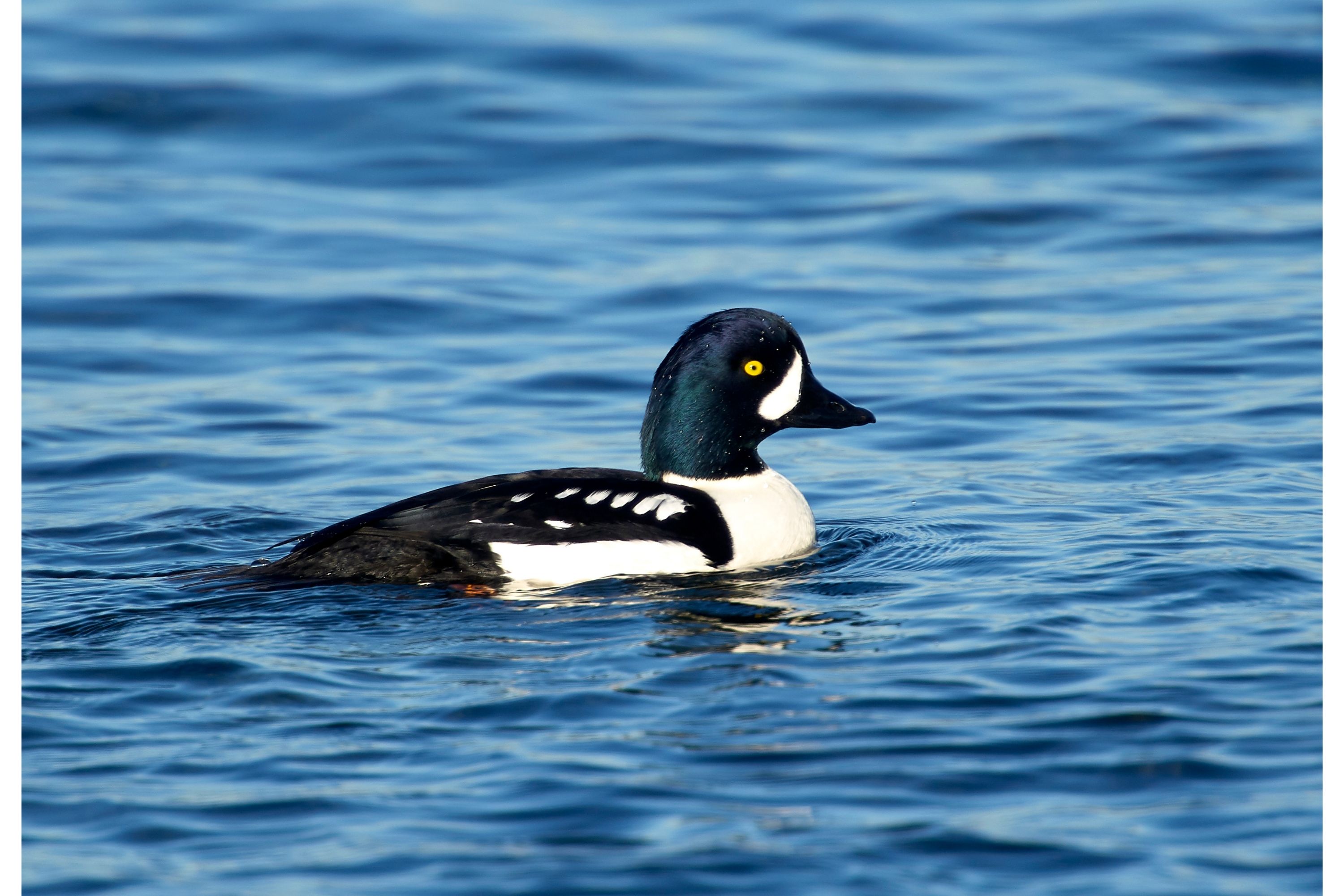Barrow's goldeneye
(Bucephala islandica)

Description
Barrow's goldeneye (Bucephala islandica) is a medium-sized sea duck of the genus Bucephala, the goldeneyes. This bird was named after Sir John Barrow. The genus name is derived from Ancient Greek boukephalos, "bullheaded", from bous, "bull " and kephale, "head", a reference to the bulbous head shape of the bufflehead. The species name islandica means Iceland. Adults are similar in appearance to the common goldeneye. On average, adult males are 19.2 in (49 cm) long and weigh 2.13 lb (970 g); females are typically 17 in (43 cm) long and weigh 1.31 lb (590 g). The Barrow's goldeneye has a wingspan of 27.6-28.7 in (70-73 cm). Adult males have a dark head with a purplish gloss and a white crescent at the front of the face. Adult females have a mostly yellow bill. The male Barrow's goldeneye differs from the male common goldeneye in the fact that the common goldeneye has a round white patches on the face, less black on the back of the bird, a greenish gloss, and a larger bill. For the females, the common goldeneye has a less rounded head, and a bill in which only the tip is yellow. Their breeding habitat consists of wooded lakes and ponds primarily in northwestern North America, but also in scattered locations in eastern Canada and Iceland. Females return to the same breeding sites year after year and also tend to use the same nesting sites. The males stay with their mate through the winter and defend their territory during the breeding season, then leave for the molting site. Mating pairs often stay intact even though the male and female are apart for long periods of time over the summer during molting times. The pair then reunites at wintering areas. In Iceland the bird is known as húsönd (house-duck); it is a common species of the Lake Mývatn in the north of the country. There have been three records of vagrants from Scotland, the only records of this species accepted as wild in Europe outside of Iceland. Very little is known about the breeding sites and patterns of the Barrow's goldeneye. After the breeding season, the birds migrate to specific molting sites to undergo molting, the loss and regeneration of feathers which causes them to be flightless for anywhere from 20–40 days. These molting sites are often wetlands that are more drought resistant and plentiful in food, along with being less influenced by humans and predators.
Taxonomic tree:







